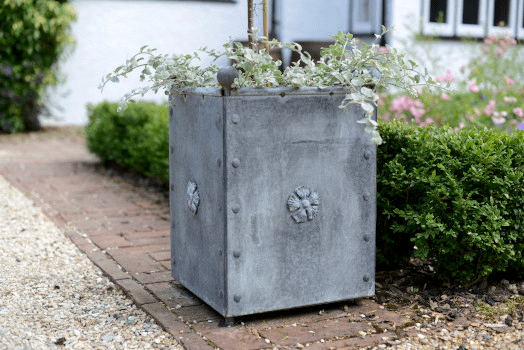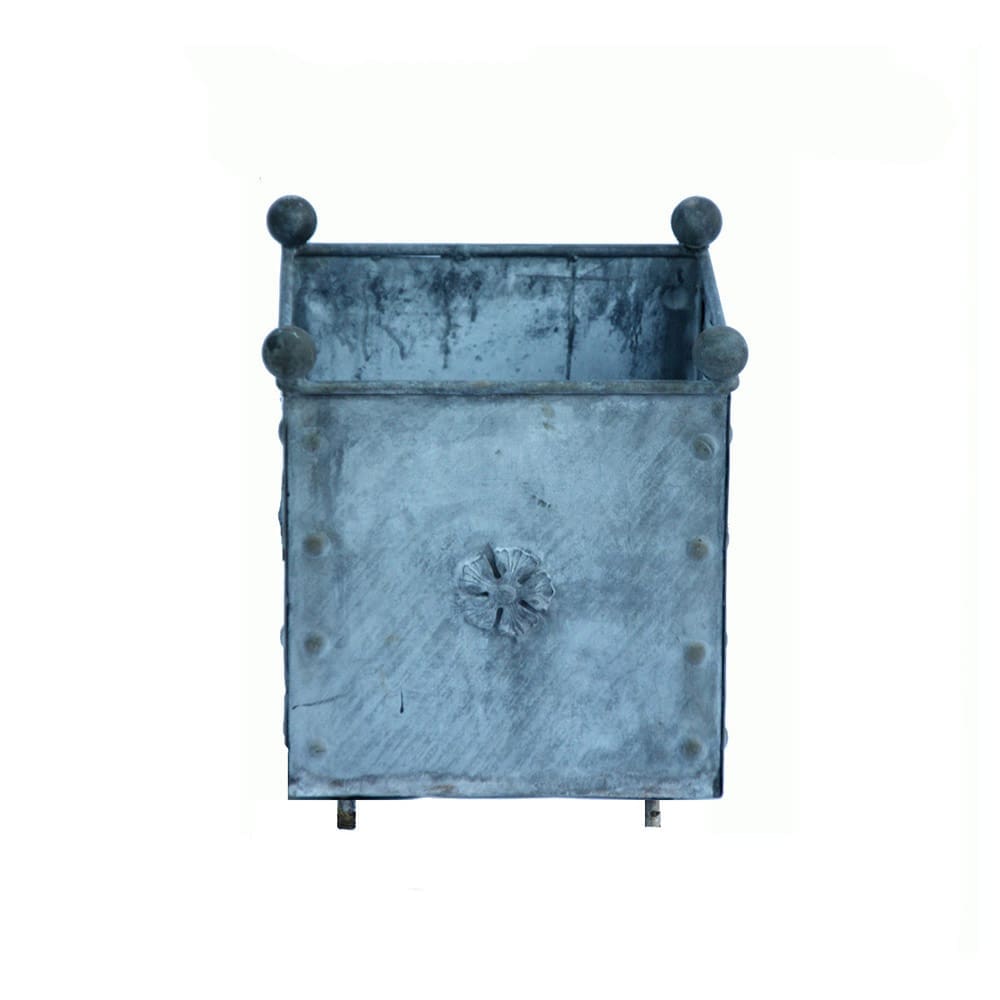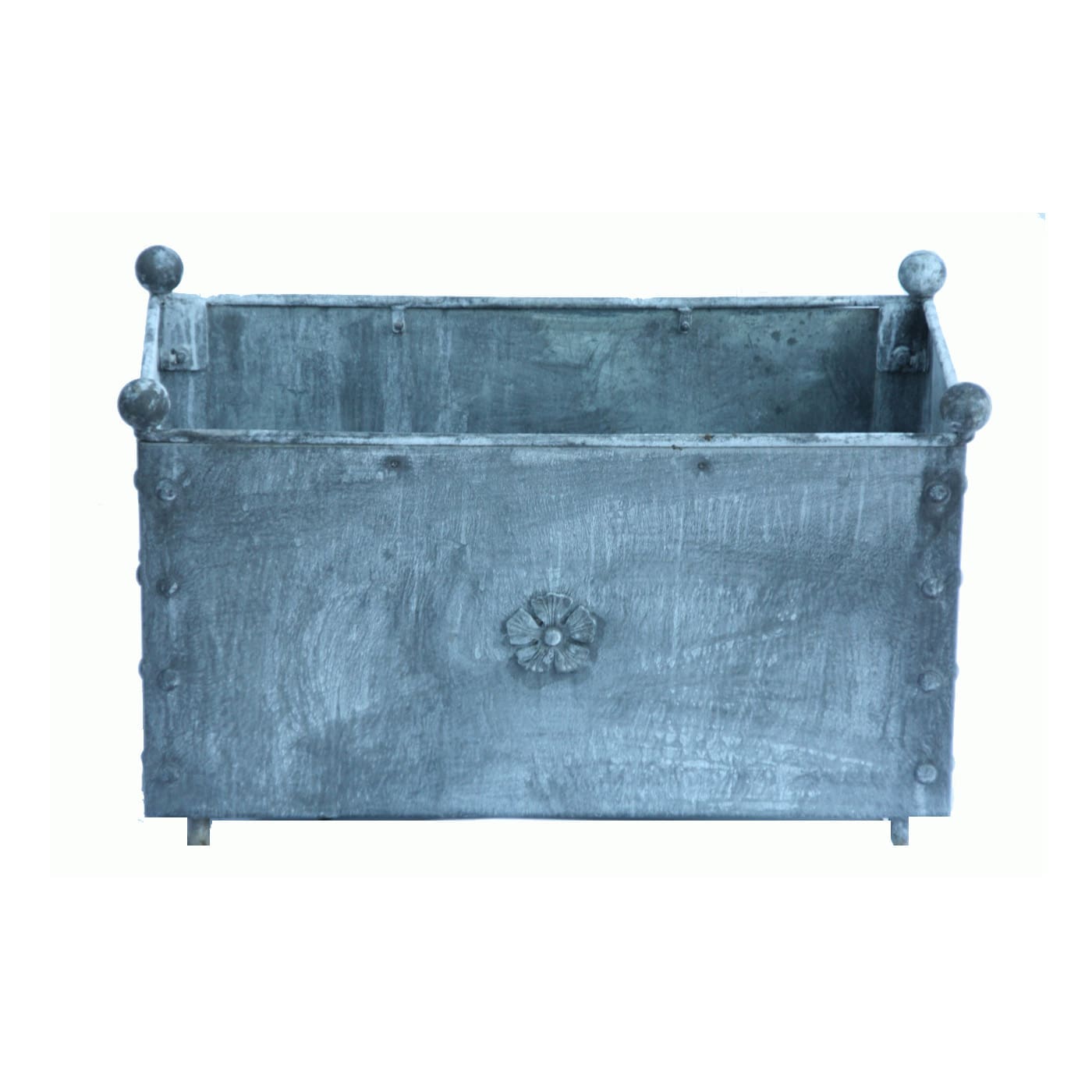
Are you looking for an innovative way to showcase your beautiful plants and flowers that will make a statement in your outdoor space? Planting in planters is an excellent solution for a container garden! Planters are an ideal choice for those who want to create their own unique garden, as they can be designed and built to fit any size convenient area. They don’t require extensive soil preparation or knowledge of gardening techniques. With the right potting soil, water, fertilizer, and care planters offer countless possibilities. Read on as we share our tips on how to successfully plant and maintain a thriving garden with growing plants in planters!

How do I choose an outdoor planter?
When it comes to choosing a planter for your container garden, there are several factors to consider beyond just aesthetics. Factors such as the size of your space, the type of plant you want to grow, the amount of sunlight your space gets and the material of the planter itself should all be taken into account. For instance, if you’re working with a smaller space, you may want to consider a hanging planter or a tabletop planter. On the other hand, if you’re looking to grow larger plants or vegetables, you may need a more spacious planter. Additionally, different materials have different benefits, metal planters are more weather-resistant and Arthur Jack metal planters come with feet to raise them up and pre-drilled drainage holes. With careful consideration and research, you’ll be able to find the perfect planter for your container grown plants that’s both functional and visually appealing for your container garden.

Which soil is best for plant growth?
As any gardener can attest, finding the right potting mix for healthy plant growth is crucial. But with so many different types of potting soil available, how do you know which one is right for your growing plants? The answer lies in understanding the composition of your soil and the needs of your container grown plants. Clay soil, for example, is dense and holds water well, but doesn’t drain easily even with drainage holes and can suffocate plant roots. Sandy soil, on the other hand, is light and airy, but doesn’t retain water or nutrients, which can lead to dry and malnourished plants.
When it comes to planting in a planter, it’s essential to avoid using garden soil. Although it may seem like a convenient and cost-effective solution, garden soil is not suitable for container gardening due to several reasons. Firstly, it tends to be denser and heavier than potting mix, which can lead to poor drainage and hinder root development. Secondly, garden soil may contain pests, diseases, and weed seeds that could harm your plants or even cause them to die. Instead, it’s highly recommended to use a high-quality potting soil specially formulated for your container garden. These mixes are lightweight, well-aerated, and provide the necessary nutrients to promote healthy plant growth. By investing in the right potting mix for your planters, you’ll ensure your plants have the best possible environment to thrive.
Tips for planting your favorite flowers or vegetables
Planning a container garden can be an exciting time, but it also requires some research and know-how. When planting your many plants, flowers or vegetables, there are a few tips to keep in mind. First, determine which plants will thrive in your specific climate and soil potting mix. Researching the ideal planting time for your organic gardening is also important. Additionally, make sure to give each plant enough space to grow and consider how much sun and water that they will need. Lastly, regularly monitor your garden for pests and diseases, and take action if needed. By following these tips, you can create plant combinations that are beautiful in your container gardens that will give you joy and nourishment all season long.
What is the best flower for planters?
When it comes to choosing the best flowers for planters, there are a few things to consider. First, think about the location of the planter. Does it receive full sun or partial shade? Different flowers thrive in different lighting conditions. Secondly, consider the size of the planter. Some flowers can grow quite large and may need more space to spread out their roots. Lastly, think about the desired color and style. Do you want something vibrant and bold or soft and delicate? With these factors in mind, some of the best flowers for planters include petunias, geraniums, marigolds, and pansies. These flowers are easy to care for and come in a variety of colors, making them a great choice for any planter.

What are long lasting flowers in a planter box?
When it comes to selecting long lasting flowers for a planter box, there is a wide range of options to choose from depending on your preferences. Some popular choices include petunias, marigolds, geraniums, and impatiens, all of which can provide bright pops of color to your outdoor space for extended periods of time. Additionally, pansies and violas are also great choices as they can bloom all the way through the colder months. By selecting a mix of these long lasting flowers, you can plant flowers to create a lush and vibrant planter box that will be the envy of your neighbors!
What are the best evergreen plants for planters all year round?
Choosing the right plants can be a daunting task, especially if you want to keep your planters lush and green all year round. Evergreen plants are the perfect solution to this dilemma. These plants can maintain their greenery and vibrancy throughout all seasons, making them an excellent choice for a year-round display. Not only do they look lovely, but they also provide a fresh and lively atmosphere to your surroundings. Some of the best evergreen plants for planters include Boxwood, Juniper, Holly, and Yew shrubs. These plants offer a range of sizes, shapes, and even colors, making it easy to find the perfect fit for any planter. Depending on your preference, you can also mix and match these plants to create a unique and diverse display. With the right plants, your planters can be the centerpiece of any room or outdoor space, and you’ll never have to worry about the changing seasons again.
How do you arrange flowers in a planter box?
Arranging flowers in a planter box can seem like a daunting task for those who don’t have a green thumb. However, with some knowledge and creativity, it’s easy to create a beautiful and functional display. First, consider the size and shape of the planter box, as well as the location where it will be placed. Next, choose a variety of plants with different heights, textures, and colors that complement each other. For example, mix flowers with trailing vines and greenery to add depth and interest. When arranging, start with a tall centerpiece plant and work your way out, keeping in mind the color scheme and placement of complementary and contrasting plants. Finally, don’t forget to water and fertilize regularly to ensure the health and longevity of your creation. With a little practice, arranging flowers in a planter box can become a fulfilling and satisfying hobby.
How deep should a planter box be for flowers?
When it comes to planter boxes, the depth can play a crucial role in ensuring the healthy growth of your flowers. Generally, flower planter boxes should be at least 8 to 12 inches deep. This depth allows for enough soil and root space for the plants to thrive and establish strong roots. However, some types of flowers, such as those with long roots or those that require deeper soil, may require more depth. It’s important to consider the specific needs of the flowers you plan to plant and adjust the depth accordingly. Keeping the planter box deep enough will retain moisture and nutrients for the plant and promote a healthy root system.
Adding compost to your soil mix for extra nutrients
Gardening enthusiasts know that healthy and nutrient-rich soil is key to ensuring your plants thrive. And while fertilizer can certainly boost the growth and health of your garden, compost is another powerful tool that’s often overlooked. Compost is a cost-effective way to add an abundance of nutrients to your soil, and it’s easy to make with simple ingredients that you may already have on hand. Whether you’re gardening in containers on a balcony or you have a sprawling yard, adding compost to your soil mix can help your plants reach their full potential. Not only will your plants love the added nutrients, but you’ll also be doing your part to reduce food waste and support a more sustainable planet.
Do you fill planters with soil or compost?
When it comes to filling your planters, you may find yourself wondering about the best material to use. While there are many options available, including perlite and vermiculite, soil and compost are two of the most popular choices. Soil is a mixture of sand, silt, and clay, and provides plants with the nutrients they need to grow. Compost, on the other hand, is a mixture of organic materials that has been broken down to create a nutrient-rich fertilizer. Both options have their pros and cons, so it’s important to consider factors such as drainage and water retention before making your choice. Ultimately, it’s up to you to decide which material will work best for your plants and gardening goals.
Can I just put compost on top of soil?
If you’re looking to improve the quality of your soil, compost can be a fantastic way to do so. However, it’s important to know how to properly use it. While it may be tempting to simply dump a bunch of compost on top of your soil, this isn’t the most effective way to go about things. Instead, consider mixing the compost into the soil itself. This will ensure that the nutrients in the compost are distributed throughout the soil, rather than just sitting on top of it. Additionally, mixing the compost into the soil can help improve its texture, making it easier for plants to grow and thrive. So while you can technically put compost on top of soil, taking the extra step to mix it in will yield much better results in the long run.
How often do you change the soil in a planter box?
If you’re new to gardening, you may be wondering how often you need to change the soil in your planter box. The answer depends on a few factors, including the type of plants you’re growing, the size of the container, and the soil quality. Generally, it’s recommended that you replace the soil in your planter box every two to three years. This helps prevent the buildup of harmful bacteria and fungi that can affect plant growth. If you notice that your plants are struggling, it may be time to change the soil sooner. Remember, healthy soil is the foundation for healthy plants, so don’t be afraid to get your hands dirty and give your planter box a refresh every few years.
What can I use to fill the bottom of a large planter?
When it comes to filling the bottom of a large planter, there are several options available. A good option is to place rocks, stones or broken clay pot shards at the bottom of the planter to provide drainage through a drainage hole and create a stable base to grow plants. You can also use old newspaper or cardboard as a filler. If you want to incorporate organic material into the soil, you can add compost or peat moss to the bottom layer. Keep in mind that whichever filler you choose, it should be lightweight enough to avoid adding unnecessary weight to the planter while also providing adequate drainage for your plants. With a little bit of experimentation, you can find the perfect filler for your large planter that will optimize its functionality and aesthetics.
Keeping pests away with natural solutions
Keeping pests away can be a challenging task for any homeowner, but using natural solutions can be a safer and more effective alternative to harsh chemicals. Some effective natural remedies include planting lavender, peppermint, or marigold in your garden, using citrus peels as a deterrent, or sprinkling diatomaceous earth around the perimeter of your home. These solutions not only repel pests, but also add a pleasant aroma to your home and can be a cost-effective option in the long run. With a little research and effort, you can keep pests at bay without harming your health or the environment.

Gardening in a planter can be an enjoyable and rewarding pastime. With the correct supplies, care, and maintenance it’s easy to plant and enjoy flowers or vegetables in a variety of conditions. Whether you’re looking for long-lasting evergreens or seasonal blooms, all you need is the perfect planter, soil type, and planting tips to create your dream garden. Investing in the right soil mix including compost or peat moss for extra nutrients is key for any healthy plant growth. Don’t forget to read up on natural solutions to keep pesky pests away! Through preparing correctly and tending often, there’s no limit to what you can grow within your planters! Of course should you run into issues then our friendly team of experts are here to help. Are you ready to find the right planter for whatever flowers or plants you choose?






Leave a reply